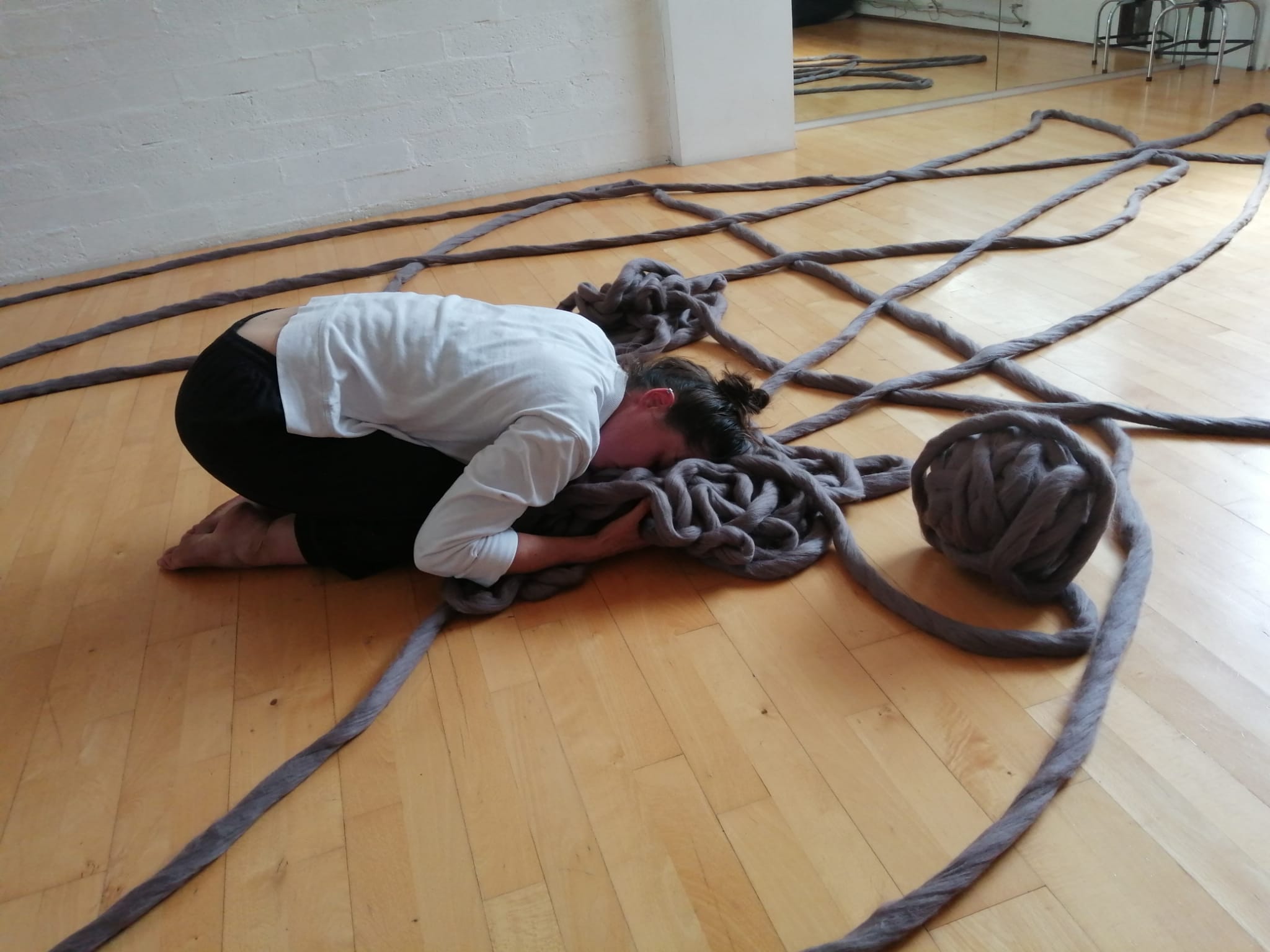Artist Residency
Tara Silverthorn ‘everything is blooming’
Dance Research Studio was delighted to have the artist Tara Silverthorn in residence for a week in August this year. Artistic Director Jacky Lansley had the opportunity to observe some of Tara’s interdisciplinary process, which combined movement, voice and work with objects in a unique and beautiful way. Her questions around ‘uncertainty’ and ‘knowledge’ seemed highly relevant to our times and Jacky invited her to expand on her ideas in response to some questions she put forward:
JL: Are you encouraging ‘uncertainty’ as positive, in the sense that it is a process/position which allows for a creative in-between space to grow. A call to openness? And if so, why do you think that is important?
TS: It seems to me that we are living through a unique time where there appear to be many notions of truth-telling and, what I perceive as, a particular quality of unease in the credibility of information. There is more communication than ever and simultaneously a kind of communication breakdown. It can feel as though stable ideas of what’s ‘real’ are kind of bottoming out. So, I think we are already in an unusual kind of in-between place.
Like me, I think that there are many people who are processing and trying to understand feelings of uncertainty right now too. I have a desire to investigate my own responses to the experience of uncertainty and to have exchanges from that place, intentionally setting up situations of uncertainty and clarity in my current work. In doing this, I’m interested in getting underneath the bamboozled feeling, weaving my way into and through complexity, laying maps and finding out what we can rely on; what there is to learn from ‘staying with the trouble’ as Donna Haraway puts it. I would like to learn about my relationships to impermanence, acceptance, resistance for example, through the process of making and practicing awareness. And hopefully sharing and transmitting this through ‘everything is blooming’, a new performance work.
Yes, a call to openness is an interesting way to put it. I enjoy slowing everything down as a way to open doors into deeper listening to the processes at play. I like to make work where the viewer can feel both restful and attentive, so that they can see the details of things from a more open and receptive place, but also as an antidote to the ways we need to operate in life to keep this thing going. I am interested in the space where meanings and sensations layer up, fold in and slip together, through me and through the viewer.
JL: As an experienced artist working with embodied languages – could you reveal a little of how/why you have arrived at the importance of questioning ‘what is knowledge’?
TS: I think that as artists working with bodies, we become familiar with a felt sense that embodied processes carry within them a kind of ‘knowing’. Sometimes, something can be revealed to us while in a moment of splaying ourselves on the ground, touching another or sending ourselves through spaces in unexpected and surprising ways. I think that we have a lot to share in this time in terms of ways of listening and attending, being and doing.
The pandemic made me question what and why I do what I do – there was a lot of uncertainty here! On reflection, I found that I needed to find a space, to move and to be still, to slip under it all for a second. I found it steadying to stay with a creative movement practice, it felt like an outlet for everything at that time to digest and pass through me. Those were the seed times of this project.
Another aspect is that it started and remains as a ‘solo’, but in many ways it’s not and never was a solo per se. It’s made with the collaborative input of other artists who have come into the studio with me and it also feels very much like an R&D that has come out of a shared place and time. In this sense, I’m interested in what I do that is both mine and not mine, perhaps speaking from a place of knowledge being a collective phenomenon, rather than individual ideas housed in a brain. I try to reflect this in the work, with my chosen material very much co-designing what happens with me. And I’d eventually like for the for the viewer to realise and have a relationship to their own involvement in the live unfolding of the work.
At the same time, I have been practicing Craniosacral Biodynamics for four years now and continued to work in clinical practice throughout much of the pandemic. This has affirmed a curiosity for and excitement in the body’s innate intelligence and, by extension, the intelligence of life. I find a kind of reassurance in noticing this deeper ‘knowledge’ that is the body constantly and subtly finding form and renewing itself.
For a long time, I’ve been interested in the subtle relationships between internal and external (if there even is a separation between these two things), in ‘presence’ and the feeling of staying open and receptive to change and to all the “dimensions of possibility” (Crystal Zillwood), even within set choreographic decisions. I like working in the place where knowing and not-knowing meet, support and enliven each other. Something that become obvious through this R&D is how one is so clearly within the other – knowing and not-knowing, doing and not-doing are in a continuum.
We are in this time where so much information is accessible through the internet and our ways of passing on knowledge are changing. The conversations around misinformation, disinformation and ‘rightness’ are potent right now. And our conceptions of the nature of knowledge are shifting and expanding. For instance, we are now understanding the interbeing and interconnectedness of everything in new ways that perhaps our ancestors already understood and which, of course, are integral notions within indigenous cultures. We are learning about mycelium networks, how trees communicate and the vast web of symbiotic relationships between species. Maybe we are cycling around to the same understandings, via new viewpoints, that our ancestors knew through their more direct and intrinsic relationships with their environment. I’m curious about all this and can’t avoid being bathed in the big, messy soup of it as I make choreography.
Tara Silverthorn is an independent performer, choreographer and craniosacral therapist living in Bristol. She is currently working on performance project everything is blooming, with the support of Dance Research Studio, Dance East, Inner Space, The Island and Arts Council England.







